Since April 2024, when President Biden signed the “TikTok Ban” bill into law, critics and creators alike have wondered what a true ban will mean for the app. The Supreme Court has upheld the law requiring TikTok’s parent company ByteDance to divest from TikTok by January 19, 2025 and TikTok did indeed go dark in the US for 14 hours–but President Donald Trump has already signed an executive order putting a temporary pause on enforcement.
While TikTok is still around in the US for now, the final outcome of the ban is still uncertain. Marketers need to be prepared for what a full ban will look like for their strategy and make contingency plans for what to do if this powerful social media platform isn’t available in the long term.
As the situation continues to develop in real time, we’re breaking down everything you need to know about why the ban exists, what will happen to the app, and what it all means for advertisers.
Where the ban stands with lawmakers right now
Arguments about whether or not the new TikTok law could be considered “unconstitutional” were heard in September by the US Court of Appeals for the D.C. Circuit, which ultimately decided to uphold the law. Following the September ruling, the Supreme Court heard TikTok’s arguments on January 10 before further confirming the earlier decision in an announcement on January 17 about upholding the law.
As if things weren’t uncertain enough, President Joe Biden introduced another potential wrinkle by choosing to leave enforcement of the law up to incoming President Trump. After his inauguration on January 20, Trump signed an executive order instructing the Justice Department not to act on the ban for 75 days.
While Trump has recently been pro-TikTok and shared his appreciation for the app in the press, his support hasn’t always been so clear: Trump also chose Brendan Carr to lead the FCC, who outlined an agenda for 2025 that included banning TikTok. It’s hard to tell where exactly the new administration will stand on the issue in the future.
So where does that leave the app today? TikTok is currently available to users who had already downloaded it, thanks to companies like Oracle and Akamai that manage TikTok’s US data restoring access. But the app hasn’t come back to the Apple or Google app stores, which means Americans can’t download or update TikTok. Other apps owned by Bytedance, including CapCut and Lemon8, are also unavailable on app stores.
It’s unlikely Apple or Google will bring the application back unless there’s a change in the law since they could face future legal liability if Trump changes his mind or another administration chooses to enforce the law later on.
Lawmakers’ biggest fear is that Chinese national security laws could force ByteDance to share US user data with China’s government, even though TikTok’s US information is stored on US-based Oracle servers.
Another issue is TikTok’s powerful algorithm, which some are concerned could manipulate public opinion. TikTok and ByteDance have continuously denied these allegations, with TikTok CEO Shou Zi Chew appearing in front of Congress to refute the claims.
This is a developing situation, and there’s still no telling what could happen as we wait for enforcement of the ban. Luckily, we’re not completely in the dark about what a total US ban might look like. Since countries like India and Afghanistan have already implemented bans on the app, we have some idea of what might be coming our way.
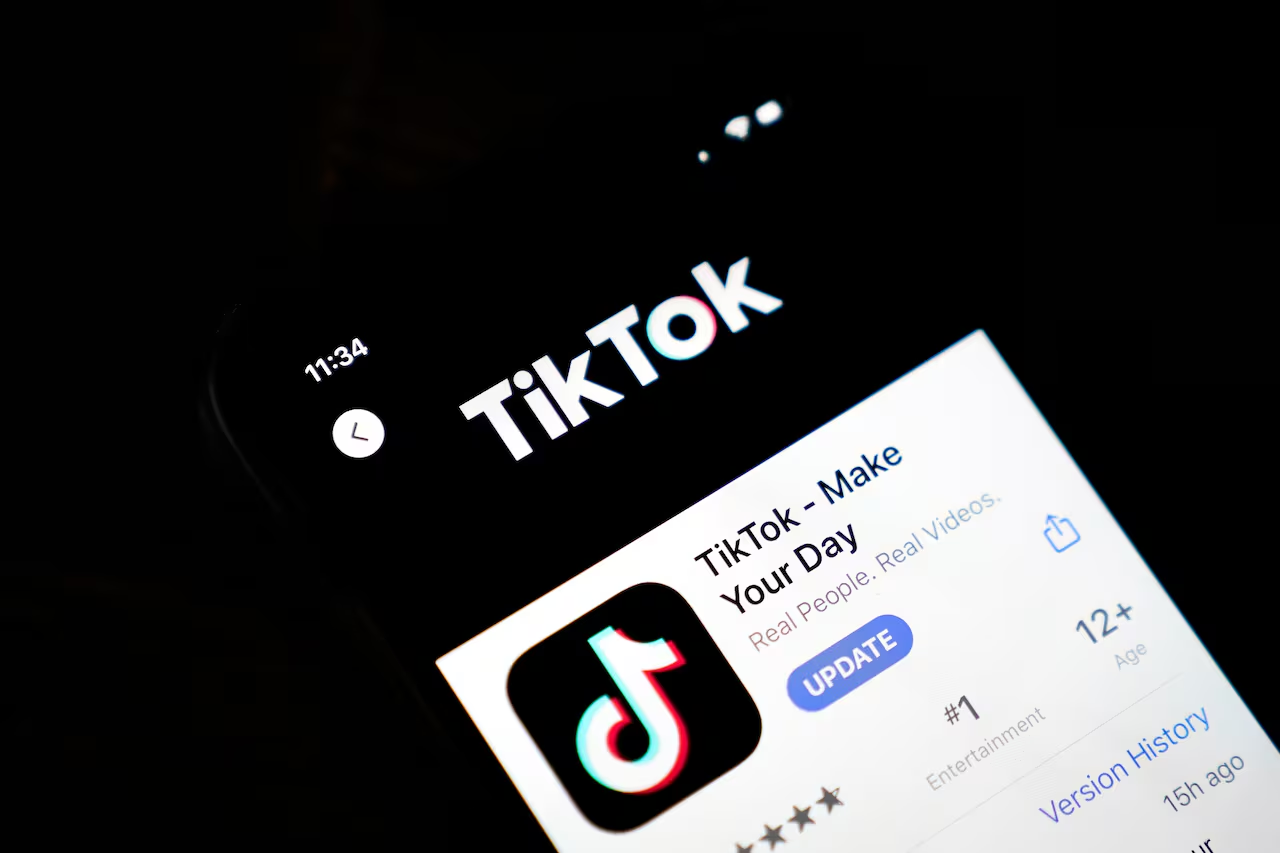
Source: CBC
What the law means for advertisers
TikTok shared that advertisers would no longer be able to run US-based ads if TikTok is banned. However, global (non-US) ads can still be run from US-based accounts. Also, US-based advertisers will retain access to their accounts but cannot run ads targeting the US.
For marketers worried about ad spend, TikTok has shared that they will honor refunds for reserved inventory if the app is banned. Of course, this won’t be an issue for everyone; many advertisers will not need refunds and can pause campaigns if and when that’s necessary. But the move shows that TikTok is aware of the issue and is looking to provide assurance to advertisers as the situation develops.
Despite these efforts, a ban could still be detrimental to advertisers. It will be a challenge to fully replace TikTok’s unique mix of authentic community and diverse, attention-grabbing short content if the app is unavailable.
TikTok has become an important driver in areas like commerce and social search, so brands will also need to find new platforms to fill those functions. Losing the app would be a major blow to US social commerce, which eMarketer reported grew by 26% in 2024 to $71.6 billion–heavily influenced by the growth of TikTok Shop.
-
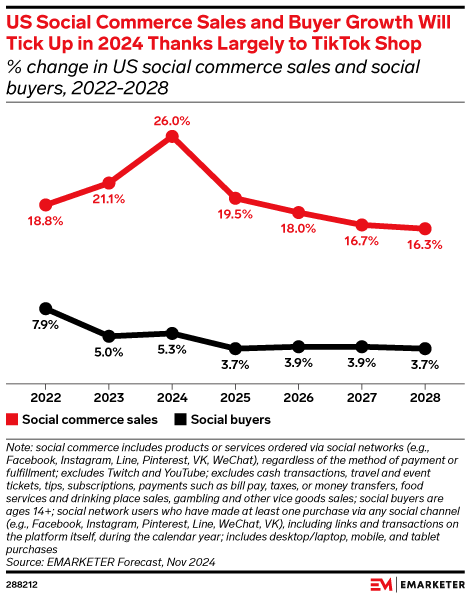
Source: eMarketer
What’s next for marketers in a post-TikTok world
Although there’s a strong possibility that the TikTok ban could take full effect in the coming months, even a US ban doesn’t mean TikTok will be gone completely–especially since TikTok will still be available in other countries.
If you haven’t already, your team needs to start making a contingency plan so your TikTok media can be reinvested first into Meta Reels and/or YouTube Shorts. Keep in mind that Lemon8, which many have touted as a possible replacement, has also been impacted by the band since it’s owned by ByteDance.
TikTok users have also been pushing back against the ban and protesting by downloading the Chinese app RedNote (known as Xiaohongshu in China), although it doesn’t seem to have ad capabilities at the present time.
You should also start taking stock of your strategy to see where your audience is, whether you’re over-dependent on any one platform, and what TikTok alternatives might work for your brand. Get started by taking action right now:
- Evaluate your TikTok audiences and other channels they might be using
- Identify the most important touchpoints that occur on TikTok
- Explore alternative platforms and start testing to identify other ways to reach your audiences
- Research relevant competitors, brand hashtags, or specific keywords in new channels to assess the kinds of conversations people are having and whether the platform is the right fit for your brand
- Identify the kinds of creative and content that are currently popular on those platforms, including influencer opportunities
We’ll continue to provide updates as we hear more news about the law and how it might impact the rest of your 2025 planning. Until the ban is put into effect and we’ve seen the implications, you should still consider TikTok as a channel pending your target audience’s usage of the platform and performance toward your business goals.

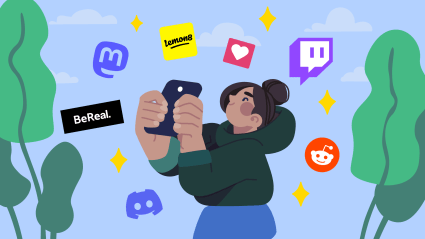


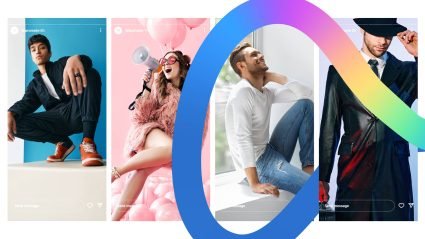
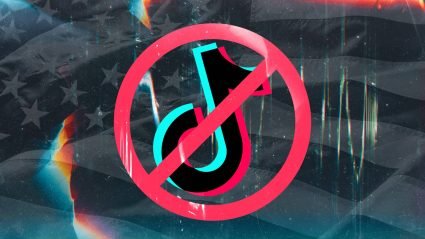

Responses